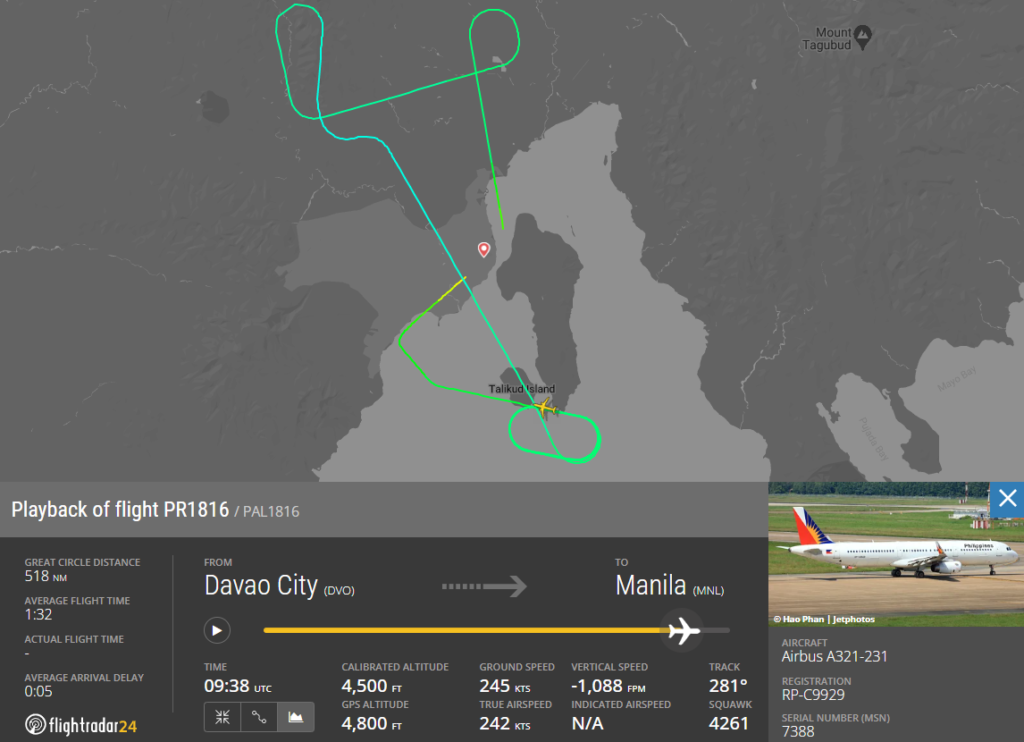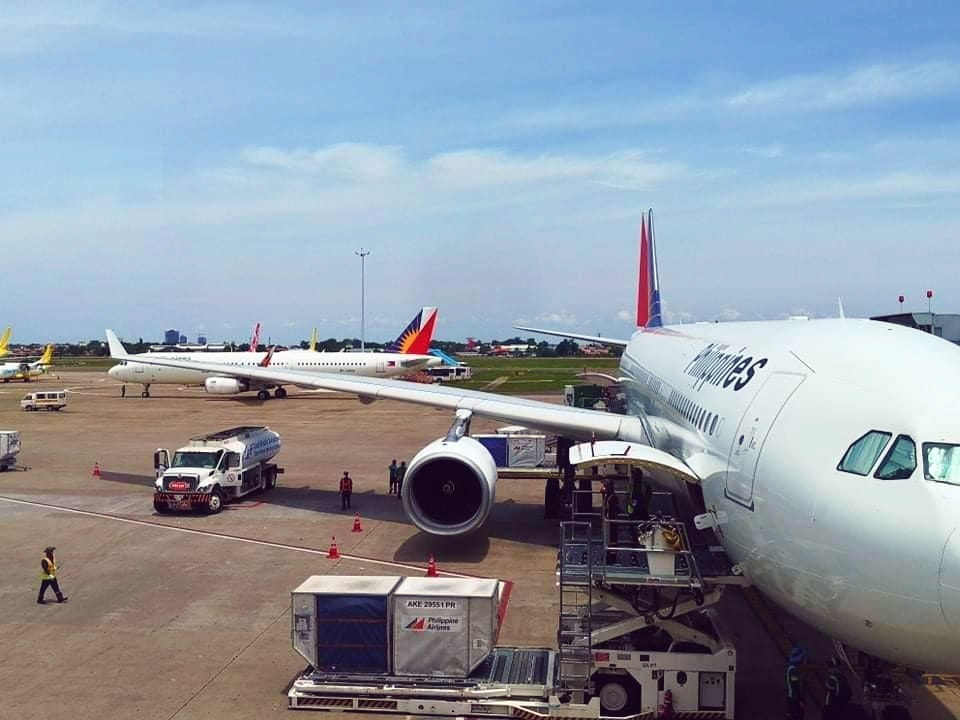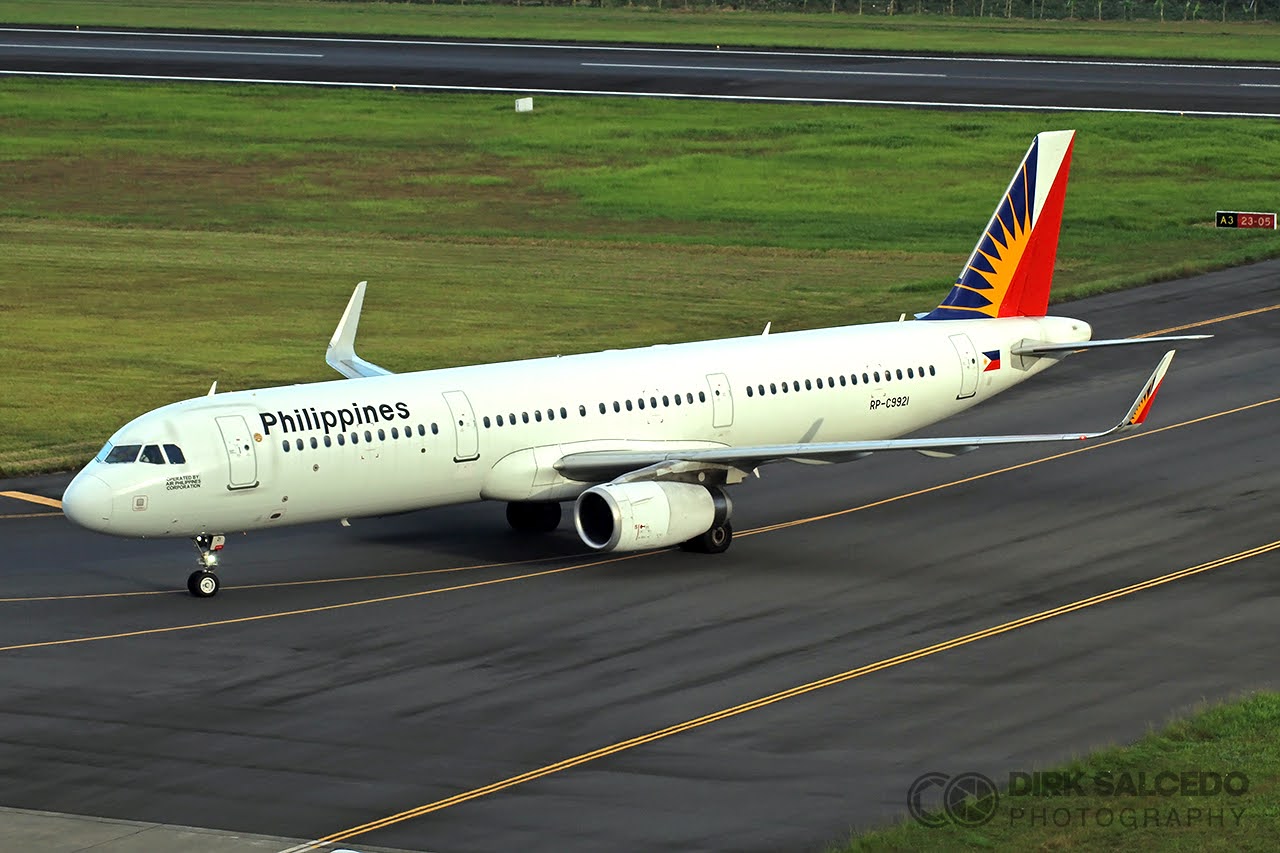
Philippine Airlines (PAL) flight PR-1816 was forced to return to its departure airport, Francisco Bangoy International Airport, due to a technical issue with the aircraft.
PAL spokesperson Cielo Villaluna confirmed that flight PR-1816, which was flown by an Airbus A321-231 with registry RP-C9929, diverted back to Davao on Saturday afternoon. The 199-passenger flight made a smooth landing in Davao.
“We confirm that our Davao to Manila flight PR1816 returned safely to Davao Airport after experiencing a technical issue. PR1816 departed Davao at 4:34 PM and re-landed at 5:47 PM. Our Airbus A321 – with 199 passengers on board – landed smoothly. The aircraft situation is currently being addressed by our technical team. Please standby for more updates,” said Villaluna.
While the airline did not disclose specific details on the technical issue, a passenger on the flight reported that they were informed that the aircraft returned due to cabin pressurization issues.
Cabin pressurization issues on any aircraft can occur due to a malfunction in the pressurization system, which is needed to prevent the loss of breathable oxygen in the cabin at higher altitudes.
Although the pilots may have been alerted of a cabin pressurization issue from the aircraft systems, it may also happen due to faulty sensors. Since safety is paramount in aviation, an unscheduled landing to prevent these issues is a better option.

Based on data from flight tracking website FlightRadar24.com, the flight stopped the climb at 5,000 feet three minutes after take-off. The aircraft then climbed to 6,000 feet at 4:42 PM while turning around for Davao. The flight then climbed to 10,000 feet at 4:49 PM.
Six minutes later, the flight descended to 5,000 feet and began holding over the Davao Gulf to burn fuel for 32 minutes before attempting to land via Davao’s Runway 05.
The fuel burning procedure is usually done when the aircraft is above the maximum landing weight (MLW). Since the aircraft did not burn enough fuel as it did not fly the intended distance, it is standard procedure to burn fuel to bring down the plane’s weight for safety reasons.
PAL assured that the safety of its passengers is of the utmost importance. The airline will provide updates as more information becomes available.
RP-C9929 was able to depart without passengers from Davao to Manila at 10:22 PM on Saturday evening. Extensive aircraft checks or maintenance will be done at the airline’s main base.
























Leave a comment